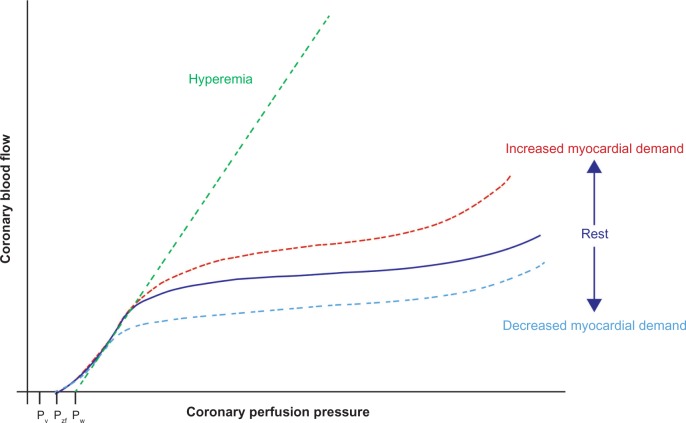Figure 1.
The coronary pressure–flow relationship.
Notes: Coronary blood flow at rest (solid line) is controlled by autoregulation and metabolic adaptation in order to maintain blood flow at a level that meets myocardial demand. During coronary hyperemia, autoregulatory control is exhausted and blood flow depends on perfusion pressure. The coronary pressure–flow relationship is concave at low perfusion pressures. The zero-flow intercept on the pressure axis (Pzf) slightly exceeds venous pressure (Pv). Straight extrapolation of the hyperemic pressure–flow relationship results in an incremental linear relationship that intercepts the pressure axis at the coronary wedge pressure (Pw). Small vessel disease or abnormal left ventricular function decreases the slope of the hyperemic pressure–flow relationship, whereas elevated left ventricular end-diastolic pressure or left ventricular hypertrophy cause a parallel shift of the hyperemic pressure–flow relationship to the right.

